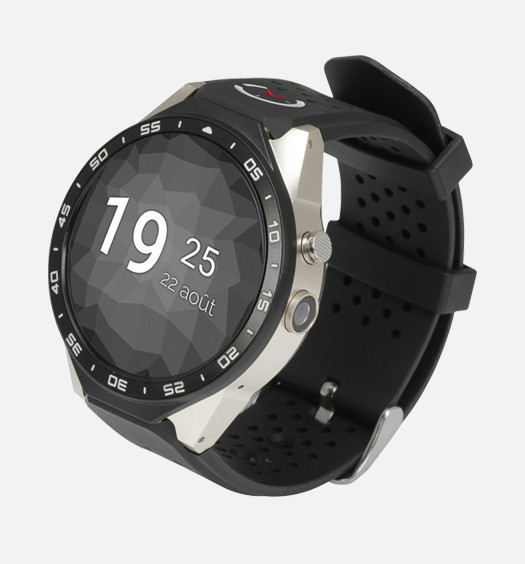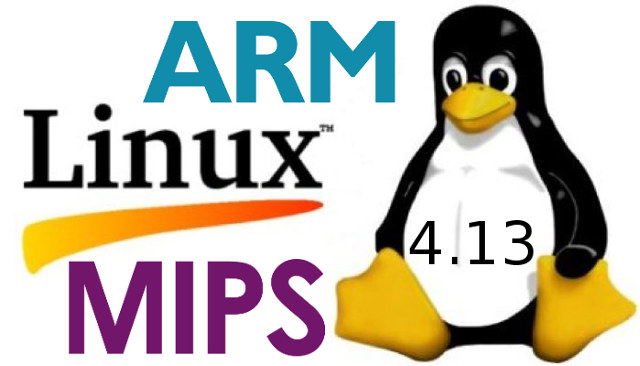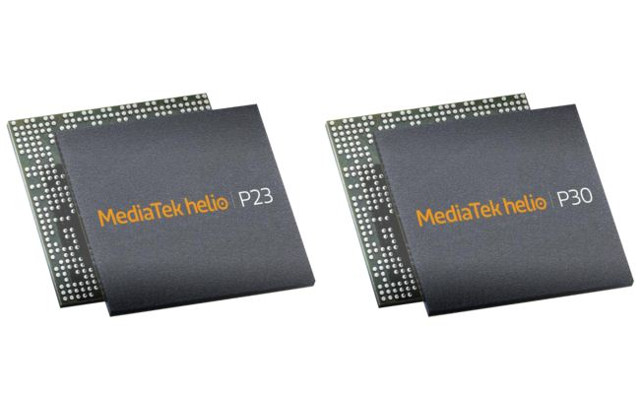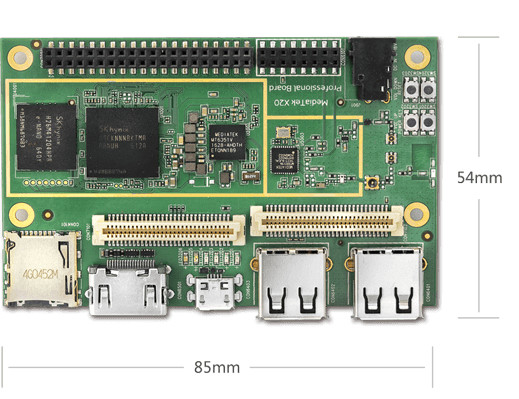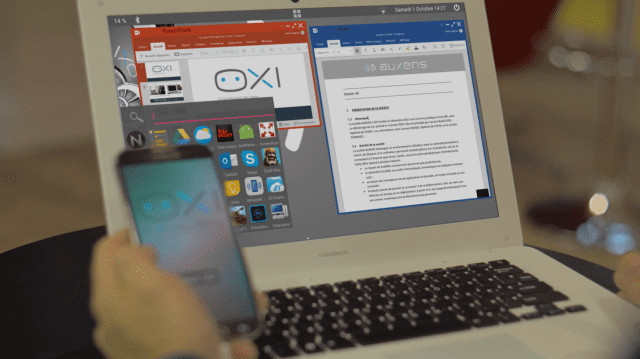At the beginning of last year, we discovered AsteroidOS (hobby) project aiming to provide a Linux based open source operating system working on some Android Wear smartwatches. At the time the OS relied on Android drivers working with libhybris, Qt5/QML for apps, and only supported LG G Watch. Since then, Florent Revest has continued development, with more watches being supported from Samsung, Asus, and other brands, and a French startup has decided to design and bring to market Connect Watch running AsteroidOS. Connect Watch specifications: SoC- Mediatek quad core processeur @ up to 1.39GHz MTK System Memory – 512MB or 1GB RAM Storage – 4 or 8GB flash Display – 1.39″ round Amoled display with 400×400 resolution Audio – Built-in speaker Connectivity Bluetooth Optional GSM ( 850/900/1800/1900MHz) and 3G WCDMA (850/2100MHz) support with nano SIM card slot GPS Camera – 2.0 MP; records to 720p Sensors – Heart rate monitor […]
Linux 4.13 Release – Main Changes, ARM & MIPS Architectures
Linus Torvalds has just announced the release of Linux 4.13 and a kidney stone…: So last week was actually somewhat eventful, but not enough to push me to delay 4.13. Most of the changes since rc7 are actually networking fixes, the bulk of them to various drivers. With apologies to the authors of said patches, they don’t look all that interesting (which is definitely exactly what you want just before a release). Details in the appended shortlog. Note that the shortlog below is obviously only since rc7 – the _full_4.13 log is much too big to post and nobody sane would read it. So if you’re interested in all the rest of it, get the git tree and limit the logs to the files you are interested in if you crave details. No, the excitement was largely in the mmu notification layer, where we had a fairly last-minute regression and […]
MediaTek Helio P23 & P30 Processors Unveiled for “Premium” Mid Range Smartphones
MediaTek has introduced two more octa-core Cortex A53 processors with respectively Helio P23 for worldwide markets, and Helio P30 for China. Both processors build upon Helio P20/P25 design, but are upgraded with a faster Mali G71MP2 GPU, LTE Cat 7/13 modem, and in the case of Helio P30 the ability to record 4K videos with H.265 codec, instead of just H.264, and a new “vision processing unit”. Mediatek Helio P23 & P30 specifications: CPU – 8 core big.LITTLE processor with 4x ARM Cortex A53 @ 2.3 GHz, 4x ARM Cortex A53 @ 1.65 GHz GPU – ARM Mali-G71MP2 GPU clocked @ 770 MHz (P23) or 950 MHz (P30) Memory I/F – 2 x 16-bit @ 1600 MHz LPDDR4X, P23 only: 1 x 32-bit @ 933 MHz LPDDR3 Storage I/F – No info Display – Up to 2160 x 1080 resolution Video Encoder – P23: 2160p30 H.264; P30: 2160p30 H.264 & HEVC […]
Meizu Pro 7 is a Dual Camera Dual Display Android Smartphone
Smartphones with dual rear cameras are becoming more common, and we’ve see some smartphones in the past with an extra rear display such as Yotaphone 2. Meizu Pro 7 and Pro 7 Plus smartphones combines both features, but instead of using an E-Ink or other e-Paper display for the secondary display, Meizu used an 1.9″ AMOLED display that automatically turns on when you flip the phone, and can be used to check the time or notifications while the main display is still off. Meizu Pro 7 / Pro 7 Plus partial specifications: SoC – Mediatek Helio X30 deca-core processor with 2x cortex A73 cores @ up to 2.6 GHz, 4x cortex A53 cores @ up to 2.2 GHz, and 4x cortex A35 cores @ up to 2.0 GHz, as well as Imagination PowerVR 7XT GPU System Memory Pro 7 – 4GB LPDDR4x Pro 7 Plus – 6GB LPDDR4x Storage Pro […]
Getting Started with MediaTek X20 Android Development Board
Thanks to CNX for helping me get a hand on the 96Boards compliant Mediatek X20 board that was generously donated by Seeed Studio. In this article, I will walk through the steps to get the board up and running and also compile Android from the source code. The current Android is version 6. Unboxing the Beast First Boot Up The board boots up from the eMMC, and the first time you boot up you will get Android screen as shown in Figure-9. This is the default Android image from the factory, which surprisingly looks like it was setup for a phone screen mode, which is not sufficient for a HDMI monitor. It would be better to install the images that are made available at Linaro website or build your own. See the other section to flash the board with different images. Switching to Fastboot Mode Flashing image files are done […]
Linux 4.12 Release – Main Changes, ARM & MIPS Architectures
Linus Torvalds has just released Linux 4.12: Things were quite calm this week, so I really didn’t have any real reason to delay the 4.12 release. As mentioned over the various rc announcements, 4.12 is one of the bigger releases historically, and I think only 4.9 ends up having had more commits. And 4.9 was big at least partly because Greg announced it was an LTS kernel. But 4.12 is just plain big. There’s also nothing particularly odd going on in the tree – it’s all just normal development, just more of it that usual. The shortlog below is obviously just the minor changes since rc7 – the whole 4.12 shortlog is much too large to post. In the diff department, 4.12 is also very big, although the reason there isn’t just that there’s a lot of development, we have the added bulk of a lot of new header files […]
ArcherMind Mediatek X20 Pro Development Board Adds 3G, 4G LTE and More I/Os
Archermind launched Mediatek X20 board powered by Mediatek Helio X20 deca-core processor, and compliant with 96Boards CE hardware specifications last year for $199. The company has now been working on a “professional” version, dubbed Mediatek X20 Pro that adds supports for 3G and 4G / LTE, as well as extra I/O connectors for cameras, LCD modules, and an RF baseboard. Alpha Star Mediatek X20 Pro board specifications: SoC – Mediatek Helio X20 (MT6797) deca-core processor with two ARM Cortex A72 cores @ 2.1~2.3 GHz, four Cortex A53 @ 1.85 GHz, four Cortex A53 @ 1.4 GHz, and ARM Mali-T880 GPU @ 700 MHz System Memory – 2GB LPDDR3 2-ch @ 933 MHz Storage – 8GB eMMC 5.1 flash + micro SD 3.0 card slot Video Output – HDMI up to 1080p @ 30 fps Video Support – 25MP @ 24fps / 25MP @ 30 fps; WQXGA 2560×1600 60fps; FHD 1920×1080 […]
Auxens OXI Brings Windows Continuum Like Desktop Mode to Android Smartphones
Remix OS, Phoenix OS, LightBiz OS… are all Android based operating systems with desktop optimizations, but so far they mostly work on TV boxes, computers or tablets. If you want something that works on smartphones with a desktop mode while connected, your choice is more limited with solutions such as community based Maru OS, or the upcoming Remix Singularity. But there’s now a new player in town with Auxens OXI that works a little like Windows Continuum, but with modifications to the Android API. OXI is based on CyanogenMod 13.1, with work being done to switch to LineageOS 14.1, and offers a desktop-like environment for Android with support for multitasking, multi-window support with resizing, notification support, and so on. It works by connecting the smartphone to a secondary screen via MHL, DisplayPort, or Miracast to get a desktop environment, while still being able to use your phone. Apps do not […]


